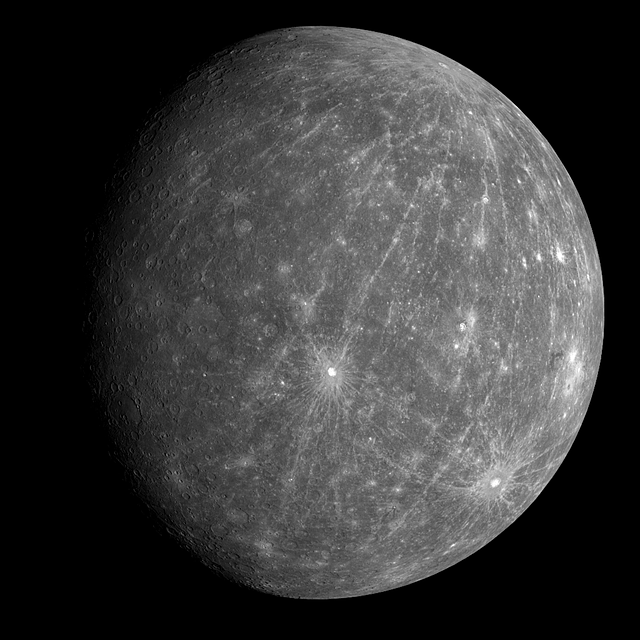*This post may contain affiliate links. This means we may make a commission if you purchase an item using one of our links*
China is the third largest country on Earth, whilst Mercury is the smallest planet in the solar system. Still, there’s no comparison regarding which one is bigger as China is a flat land mass with a surface area of 9.7 million square kilometers and a volume of 462.5 million cubic kilometers while Mercury is a spherical entity with a surface area of 74.79 million square kilometers and a volume of 60.8 billion cubic kilometers.
For a more thorough breakdown on what makes both entities as big as they are, continue reading as it’ll be covered in more detail below.
How Big Is China?

China – officially named the People’s Republic of China – is the third largest country in the world and is located in East Asia. It is also the most populous country in the world, with a population of over 1.4 billion people.
China has a land area of 9,388,211 sq. km and a total area of 9,706,961 sq. km. The total area comprises not only the land mass but also the bodies of water (such as lakes and rivers). China has a diameter of 5,000 km stretching from east to west and a north-south length of 5,500 km.
One-third of China’s total land area comprises mountains, and it is home to the tallest peak in the world, Everest, which occupies the border between China and Nepal. Thanks to this mountainous terrain, the average thickness of China’s continental crust is 47.6 km (the average global thickness is 39.2km). This gives China an estimated volume of 462,051,344 cubic km.
The topography of China is varied and encompasses the highest and one of the lowest places on Earth, with climates that vary from dry desert to tropical monsoon. In fact, China has the greatest north-south temperature contrast of any country in the world.
China’s coastline runs for around 14,000km, while its land frontier extends to 20,000km to encompass its borders with 14 other countries, including Russia, Mongolia, India, and Kazakhstan. Generally speaking, China has a high west side and a low east side, meaning that many of its rivers flow eastward.
The vast expanse of this country covers almost five time zones, but China operates under a single time zone to unify the country.
How Big Is Mercury?

Mercury is the smallest planet in the Milky Way, with a diameter of 4,878km – around 50% larger than the diameter of Mercury. At only two-fifths the size of Earth, Mercury is even smaller than the largest moons in our solar system, Ganymede and Titan.
This planet is a similar size to our moon and is only 58 million kilometers from the Sun, which means that the Sun would appear three times larger if we were standing on Mercury compared to standing on Earth. And because of this proximity, surface temperatures reach as high as 430 degrees Celsius during the day.
This rocky planet possesses an iron core that comprises a large part of the interior; it accounts for around three-quarters of Mercury’s diameter. Approximately 70% of Mercury’s weight is attributed to its iron, with the core a similar size to our moon. Atop the core sits a rocky mantle of approximately 55km in thickness.
The surface of Mercury is similar to that of our moon, with a number of impact craters caused by meteorite collisions. Some of the most significant impact basins include Caloris (with a diameter of 1,550km) and Rachmaninoff (with a diameter of 306km), created by early asteroid impacts.
Mercury has many areas of smooth terrain, along with cliffs that stretch for hundreds of kilometers and reach up to a mile into the sky. These cliffs were formed over billions of years as Mercury’s interior cooled and contracted.
And NASA’s research into these cliff-like landforms – or scarps – shows that Mercury continues to shrink. The size of the scarps displays their youth and suggests that Mercury is still tectonically active, just like Earth. As the interior continues to cool, the planet will continue to contract.
The surface area of Mercury is around 74,797,000 square kilometers, more than 8 times the surface area of the country of China.
Furthermore, Mercury is spherical in shape so it’s overall volume would blow the value of any if not all countries and continents on Earth, out of the water.
This is because Mercury’s volume of 60.8 billion cubic kilometers makes it so China’s volume doesn’t even come close to the cubic measure of even the smallest planet in our solar system.
Summary
Even though China is huge in its own right, it simply cannot compare to a spherical object, even if does have a smaller diameter overall than the flat land mass in question.
Mercury absolutely dwarfs China when it comes to surface area, being around 8 times larger there and around 160 times bigger in terms of volume.

